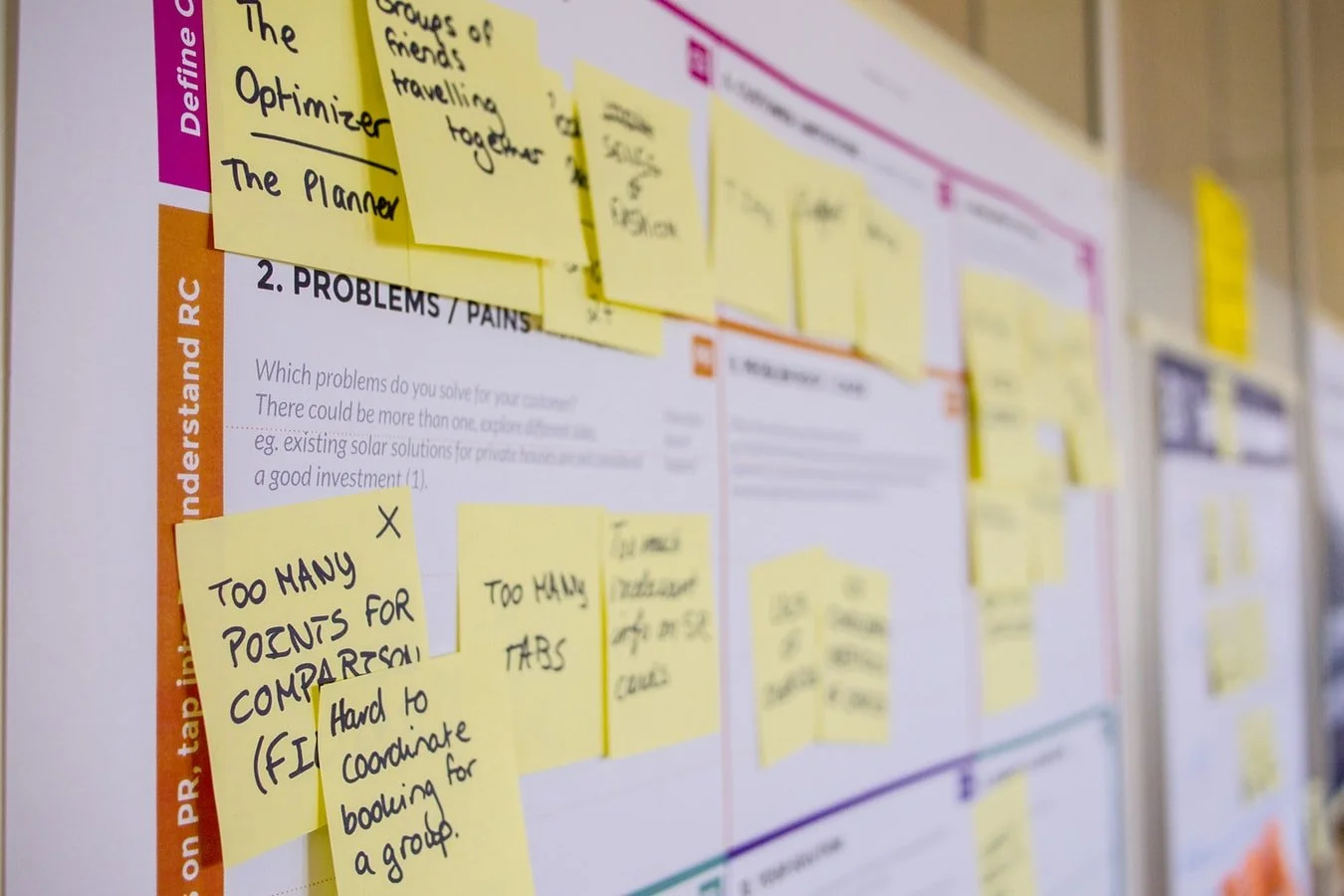Design process
What is the best design process to use? Well, it depends on what type of product you’re designing as different projects require different approaches. There’s no one-size-fits-all solution but the goal is always the same: to understand and empathise with your customers so you can design a great product that solves a genuine problem for them. Most design processes originate from this “design thinking” concept.
-
A great experience starts with a very good understanding of your users. In-depth interviews provide qualitative data about the target audience, such as their needs, wants, fears, motivations, and behaviour.
-
Project kick-off meetings are a great way to get key players together to set proper expectations for the product team and stakeholders. The outcome of this meeting should be a clear value proposition for the product: who it is for and why they would use it. Also a clear understanding of the business goals.
-
Sketching sessions are a great way to begin, it's the easiest and fastest way to visualise ideas. The purpose is not to find the right idea, it's to get the broadest range of design solutions before deciding which one to go with.
-
Only when users’ needs, wants and expectations are clear designers move to the design phase. An effective design phase is highly collaborative, working with product owners and developers. It is also iterative, meaning it circles back on itself to validate ideas or experiments.
-
Validation is an essential step in the design process because it helps teams understand whether the design works for users. Designers might use many different formats with people who represent your target audience. These might include moderated/unmoderated usability testing, A/B testing or analytics tools to uncover how users interact with the product.
Services I offer
Customer insights and discovery
Learn how your customers engage with your product and services and how you can improve it by designing for their needs.
Building design systems
Bring consistency and scalability, speed up your design workflow and improve developer hand-off by building your own design system.
Facilitating design workshops
Create and visualise a shared understanding of the problem you’re trying to solve and work through complex problems as a team.
Managing design workflow
Ensure quality and predictability by identifying tools and processes that help the design team to collaboratively achieve a shared outcome.
Rapid prototyping and testing
Reduce risk by building prototypes that simulate your product for users and can be adapted and changed before development.
Leading design teams
Provide vision, guidance and promote design thinking in your teams whilst helping team members grow with coaching and feedback.


